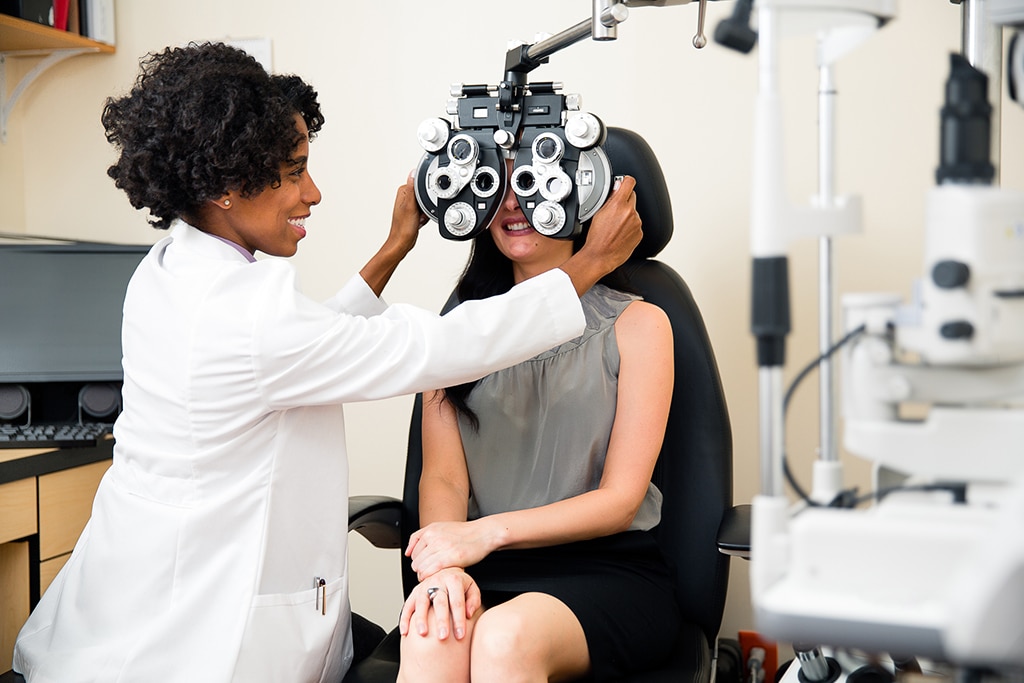Top Factors to Check Out an Optometrist Chino for Your Eye Health
Top Factors to Check Out an Optometrist Chino for Your Eye Health
Blog Article
Checking Out the current Technological Developments in Optometry and What They Mean for Optometrists
In the ever-evolving area of optometry, current technical developments are reshaping just how experts come close to eye care. From the accuracy of Optical Coherence Tomography to the nuanced insights offered by AI-driven diagnostic devices, these advancements are establishing new criteria in patient analysis and therapy. Teleoptometry is positioned to redefine availability, making certain that knowledge transcends geographical limitations. As these improvements penetrate the practice, eye doctors are encountered with the obstacle of embracing these devices to enhance patient end results. The concern remains: exactly how will these technological shifts redefine the functions and obligations within the profession?
Technologies in Diagnostic Equipment
Advancing the field of optometry, advancements in diagnostic devices have revolutionized the means eye treatment specialists assess and diagnose visual problems and ocular conditions. The previous years has seen considerable technological innovations, enabling more accurate and thorough assessments. Optical Comprehensibility Tomography (OCT), as an example, offers high-resolution cross-sectional pictures of the retina, allowing for the very early discovery of illness such as glaucoma and age-related macular degeneration. This non-invasive imaging method has come to be important in modern optometric practice.
An additional key innovation is the introduction of innovative corneal topography systems, which map the surface area curvature of the cornea with accuracy. These tools are specifically beneficial for suitable contact lenses and detecting corneal conditions. Electronic retinal imaging has actually changed traditional ophthalmoscopy, offering thorough, panoramic sights of the retina that help with detailed aesthetic assessments.
The development of wavefront aberrometry has actually likewise been important, enabling the evaluation of refractive errors with unrivaled accuracy (Opticore Optometry). This modern technology assists in personalizing rehabilitative lenses and boosting surgical results for refractive surgical procedures. Jointly, these diagnostic innovations empower eye doctors to supply remarkable individual care, guaranteeing very early intervention and tailored treatment approaches, ultimately boosting aesthetic health and wellness results
AI in Patient Administration
Building on the structure of sophisticated analysis devices, the unification of man-made knowledge (AI) in individual management stands for a transformative leap for optometry. AI systems are significantly employed to boost efficiency, precision, and personalization in person treatment.
Furthermore, AI-driven systems facilitate streamlined person interactions and management processes. Automated scheduling, digital assessments, and individualized follow-up strategies not just improve individual complete satisfaction yet likewise optimize time administration for experts. These systems can triage people based on the seriousness of their problems, ensuring that those in important need get punctual focus.
Furthermore, AI enhances decision-making by offering optometrists with evidence-based referrals and treatment paths. By incorporating information from digital health documents, AI devices provide insights that notify medical decisions, decreasing the threat of mistakes and boosting client end results. As AI remains to progress, its function in patient management will likely increase, reshaping the landscape of optometric care.
Breakthroughs in Retinal Imaging
In the realm of optometry, retinal imaging has actually experienced amazing technological advancements that are improving diagnostic capacities and individual treatment. Technologies such as Optical Comprehensibility Tomography (OCT) and fundus photography have reinvented just how optometrists analyze the retina and picture.
Boosted imaging modalities like OCT angiography are more refining diagnostic precision. Eye Doctor Optometrist. Such improvements facilitate the identification of minute retinal modifications that might represent condition development.
Furthermore, innovations in fabricated intelligence are enhancing retinal imaging by enabling automated evaluation of huge datasets. These systems Click Here help eye doctors in determining patterns a measure of pathology, consequently improving analysis precision and effectiveness. Jointly, these developments are transforming retinal imaging right into a foundation of modern-day eye treatment, boosting results and increasing restorative opportunities.
Teleoptometry's Expanding Function
Teleoptometry is increasingly becoming an important part of eye treatment, driven by innovations in digital communication and diagnostic tools. This is specifically beneficial in underserved and rural areas where accessibility to specialized eye treatment is usually limited.
The assimilation of expert system (AI) additional enhances teleoptometry, allowing the analysis of visual information and aiding in the discovery of ocular problems such as glaucoma and diabetic person retinopathy. AI-powered formulas can quickly translate complex imaging information, providing eye doctors with beneficial insights that reinforce professional decision-making.
In addition, teleoptometry sustains continuity of treatment with seamless combination with electronic wellness documents (EHRs), permitting optometrists to keep detailed patient histories. This ensures that people receive consistent and individualized care even when seeking advice from various professionals.
In spite of these benefits, challenges continue to be, including making certain information security and handling person assumptions. Nevertheless, teleoptometry stands for a substantial stride towards more accessible, reliable, and patient-centered eye care. As technology progresses, its function is poised to increase further.

Future Trends in Eye Care
A myriad of cutting-edge fads is readied to reshape the future of eye care, driven by technological advancements and the evolving needs of individuals. One significant fad is the assimilation of synthetic intelligence (AI) in diagnostics, which guarantees to enhance the accuracy and efficiency of eye evaluations. AI formulas can assess substantial quantities of information from retinal images, potentially identifying problems like diabetic person retinopathy and glaucoma earlier than standard techniques.
In addition, official statement personalized medicine is getting traction in optometry, with hereditary screening educating customized treatment plans. This method aims to optimize individual end results by tailoring treatments to individual hereditary profiles. Wearable modern technology, such as clever get in touch with lenses, is also coming up, offering real-time tracking of intraocular pressure or sugar degrees, thus providing constant understandings into eye and systemic wellness.
The adoption of augmented reality (AR) and digital fact (VR) in training and individual education is one more emerging pattern. These modern technologies provide immersive experiences that can boost understanding and skills both for eye doctors and clients. As these fads develop, optometrists should remain abreast of technological developments to supply innovative treatment, guaranteeing better individual outcomes and contentment in the vibrant landscape of eye care.
Final Thought

Collectively, these diagnostic developments encourage eye doctors to supply remarkable individual treatment, making certain very early treatment and tailored treatment strategies, inevitably enhancing aesthetic wellness results.

As these innovations continue to develop, eye doctors should adapt and incorporate them right into method, eventually optimizing workflow efficiency and raising the standard of eye care supplied to clients.
Report this page